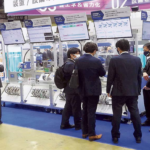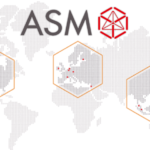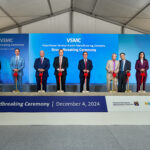ASIA ELECTRONICS INDUSTRYYOUR WINDOW TO SMART MANUFACTURING
SEMI Sees Fab Equipment Spending to Grow More in 2025
Global industry association SEMI forecasted that fab equipment spending for front-end facilities in 2025 will likely increase by 2 percent year-over-year to US$110 billion. Accordingly, this will mark the sixth consecutive year of growth since 2020.
SEMI, in its latest quarterly World Fab Forecast report, said fab equipment spending is projected to rise by 18 percent in 2026, reaching US$130 billion.
Why Fab Equipment Spending Matters
Global fab equipment spending has been an important benchmark of the semiconductor industry’s ability to meet the growing global demand for chips. Specifically, it serves as a barometer on the industry’s capability to pursue advanced technologies in the fields of AI, automotive, and IoT. Thus, an indicator of the industry’s strength.
The growth in investment is driven not only by demand in the high-performance computing (HPC) and memory sectors to support data center expansions, but also by the increasing integration of artificial intelligence (AI), which is driving up the silicon content required for edge devices.
“The global semiconductor industry’s investments in fab equipment have been edging up for six straight years, and spending is poised to see a strong 18% increase in 2026 as production ramps to meet booming AI-related chip demand,” said Ajit Manocha, SEMI President and CEO.
In addition, Maocha said, “This forecasted capex growth signals an urgent need for intensified workforce development initiatives throughout 2025 and 2026 to deliver skilled workers necessary for the approximately 50 new fabs expected to come online during these two years.”
Logic & Micro Segment Lead Semiconductor Industry Expansion
The Logic & Micro segment will likely become a key driver of growth in fab investments. This growth is primarily fueled by investments in cutting-edge technologies, such as 2nm process and backside power delivery technology, which will enter production by 2026. The Logic & Micro segment is projected to see an 11 percent increase in investments, reaching US$52 billion in 2025, followed by a 14 percent increase to US$59 billion in 2026.
Overall Memory segment spending is expected to grow steadily the next two years, increasing by 2 percent to reach US$32 billion by 2025, with an even stronger growth forecast of 27 percent in 2026.
Meanwhile, according to SEMI forecast, investments in the DRAM segment may decline by 6 percent year-over-year, totaling US$21 billion in 2025. However, it is likely to rebound with a 19 percent increase to US$25 billion in 2026.
Conversely, NAND segment spending is expected to recover significantly, rising by 54 percent year-over-year to US$10 billion in 2025, and further increasing by 47 percent to US$15 billion in 2026.
China Continues Regional Spending Lead
Despite a decline from a peak of US$50 billion in 2024, China is expected to maintain its position as the leader in global semiconductor equipment spending, with projections of US$38 billion in 2025 representing a 24 percent year-over-year decrease. By 2026, spending is forecast to decline further 5 percent year-over-year to $36 billion.
With the growing penetration of AI technology driving higher memory adoption, Korean chipmakers are planning to invest more in equipment for capacity expansion and technology upgrades, which is expected to position the region as the second highest spending through 2026. Korean investment is forecasted to grow by 29 percent to US$21.5 billion in 2025 and by 26 percent to US$27 billion in 2026.
Meanwhile, Taiwan is set to secure third place in spending as its chipmakers aim to enhance their leadership in advanced technology and production capabilities. Taiwan is projected to spend US$21 billion in 2025 and US$24.5 billion in 2026 to meet the growing demand for AI applications across cloud services and edge devices.
On the other hand, the Americas region ranks fourth, with expected spending of US$14 billion in 2025 and US$20 billion in 2026.
Japan, Europe and the Middle East, and Southeast Asia follow in investments, projected to spend US$14 billion, US$9 billion, and US$4 billion in 2025, and US$11 billion, US$7 billion, and US$4 billion in 2026, respectively.




